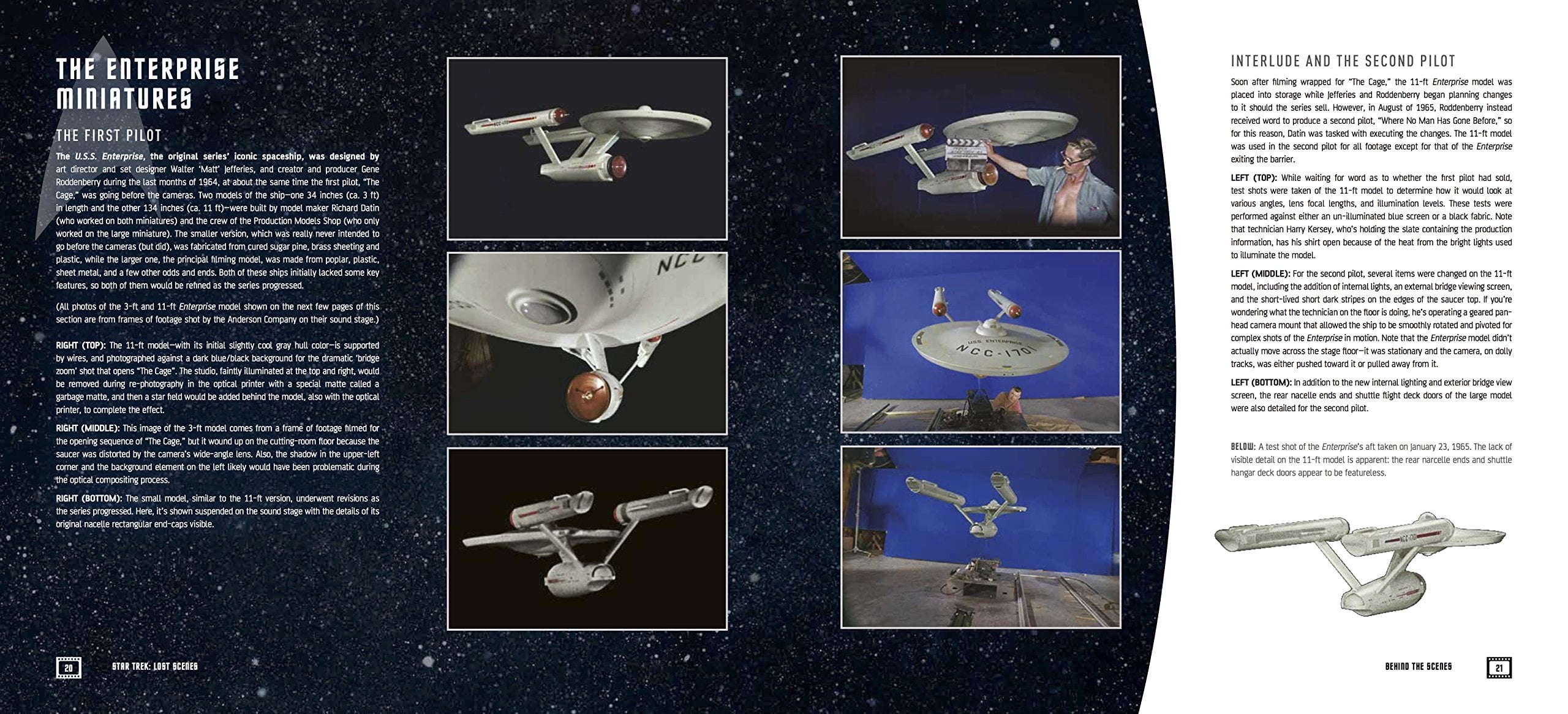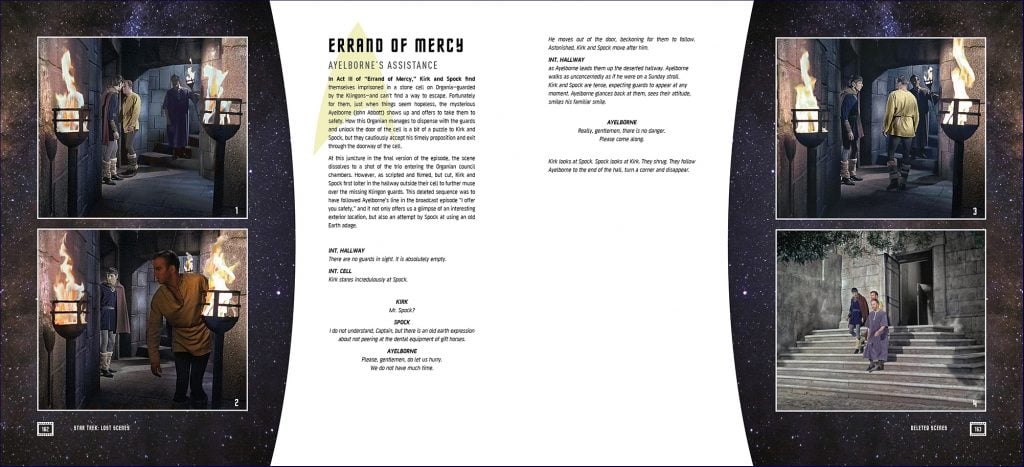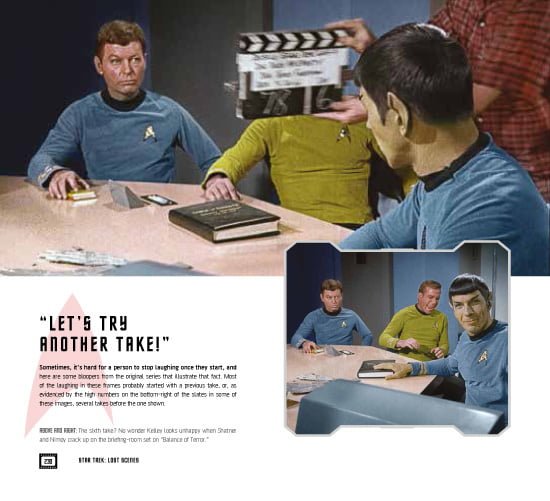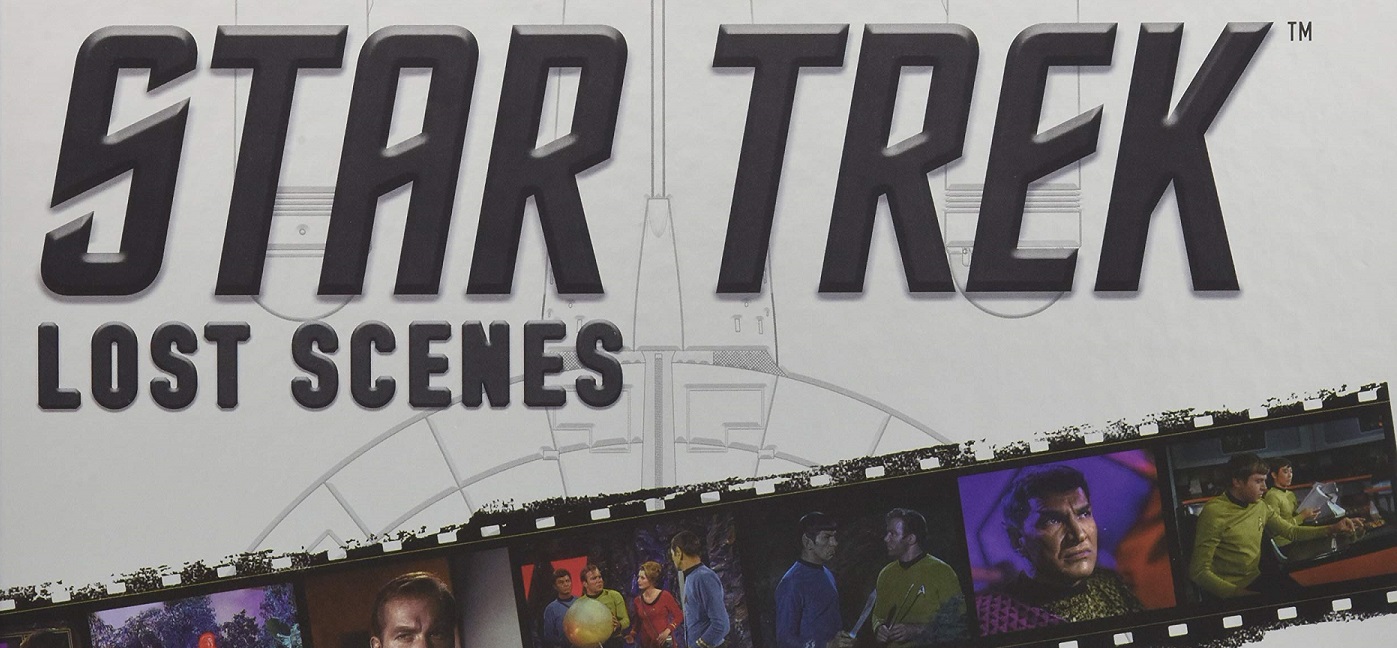
“Even hardcore fans don’t know this!”
We’ve all heard that one before, trumpeted as it is from countless clickbait articles and behind the scenes books. It’s the sort of claim that reference works love to make, that any self-respecting production documentary aspires to. But let’s be blunt, shall we? ‘Star Trek’ is fifty-two years old. Between the age of the show, the increasing dearth of new perspectives that comes from both the aging of the cast and crew, and the fanbase’s bottomless appetite for behind the scenes material, it’s hard not to wonder where one might find any stones that had somehow been left unturned. But that’s exactly what David Tilotta and Curt McAloney set about doing with ‘Star Trek: Lost Scenes’.
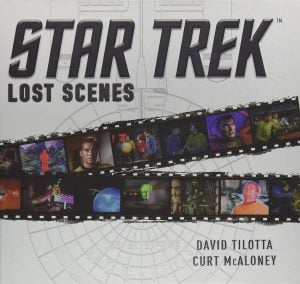
Deleted scenes have been a staple of home video bonus features since at least the rise of the DVD format at the turn of the century. And ‘Star Trek’ has been no exception, with various post-millennial releases of the films and television shows alike. The original series, though, provides something of a notable exception, despite having been released in its entirety on DVD (twice) before being remastered for high definition and released on blu-ray, all in the first decade of the twenty-first century, you’d expect there to be at least a handful of deleted scenes spread across all those box sets.
You would be surprised.
So what happened to all of this extra ‘Star Trek’ footage? Well, the sad fact is that it simply wasn’t common practice to save that sort of thing fifty years ago. It’s sort of a smaller-scale version of the tragedy that befell the early days of ‘Doctor Who’, where thanks to the fact that the physical media itself was deemed more valuable than whatever might have been recorded on it, the master copies of some ninety-seven of the program’s earliest episodes (including some of its most historically important) were wiped for reuse by the BBC. In the case of ‘Star Trek’, no one saw any value in saving this footage, so whatever ended up on the cutting room floor would eventually be trashed.
Enter Gene Roddenberry. As longtime ‘Trek’ fans will no doubt recall, in 1967 Roddenberry partnered with noted ‘Trek’ fans Bjo and John Trimble to establish Lincoln Enterprises (which lives on today in the form of Roddenberry.com), a mail order business that specialized in selling authentic ‘Star Trek’ memorabilia to fans. Among other things, their offerings included film clips (in this context, literal clippings – a single frame, really – of film) from ‘Star Trek’. These were usually sourced from the dailies, episode prints, and other scraps of film that the studio would otherwise have thrown out. By sheer happenstance, this included footage from a lot of deleted scenes. It was from an archive of old Lincoln Enterprises clip offerings that the material showcased in the book is primarily sourced (though there is some overlap with Roddenberry’s personal collection of film reels – which after their discovery and restoration formed the basis of the ‘Roddenberry Vault’). So essentially, ‘Lost Scenes’ is a few hundred pages of lovingly restored and contextualized still images from the production of the original ‘Star Trek’. Though I’m not sure that entirely does it justice
But you’re not here for a book report, are you? You want to know if it’s worth buying! Well…
Truth be told, I don’t know what I expected when I first cracked this thing open. Maybe scene descriptions and some nice, glossy photos? Expectations aside, what I got was – to coin a phrase – “fascinating.” See, I described it above as essentially a collection of “lovingly restored and contextualized still images from the production of the original ‘Star Trek’,” and that’s accurate enough, but it really doesn’t do the book justice. The nearly three hundred page tome is broken into three main sections: ‘Behind the Scenes’, ‘Deleted Scenes’, and ‘Bloopers’, each with its own surprises.
In some ways, the first of those sections, ‘Behind the Scenes’, is the most surprising. For one thing, it actually makes up the bulk of the book, totaling nearly half of its page count. Within those pages is an impressively detailed breakdown of the show’s use of matte paintings, starship miniatures, animation effects, and more. This also includes, among other things, stills illustrating early makeup tests and the visual evolution of now-iconic effects like phaser beams and the transporter. It also shows off the environments, featuring some gorgeous photos, not only of the sets but of backlots and iconic filming locations like the Vasquez Rocks.
There’s an extent to which some of this material may be old news. It really depends on how well-versed you are, not just in ‘Star Trek’ but in the makeup, miniature filming, and visual effects techniques that were available to television productions in the late sixties. But even then, knowing how it’s done is a far cry from seeing it, and that’s the cool part of this section.
Which brings us to ‘Deleted Scenes’. Let’s not kid ourselves. As impressive as the prior section may be, this is the book’s selling point. Within these pages we find virtually every known deleted scene from the original ‘Star Trek’, encompassing the entirety of the show’s run. Some of these scenes will be familiar to longtime fans. I’ve mentioned ‘The Roddenberry Vault’ a few times in this review, and while ‘Lost Scenes’ is largely based on different sources, it does by its very nature include some scenes that were present in part or in whole in that collection. And then there are things like the original ending of ‘Who Mourns For Adonais?’, which revealed Lt. Carolyn Palamas had (in the finest tradition of Greek myth) been impregnated by Apollo. That moment, and others like it, will certainly be familiar to fans who are acquainted with James Blish’s novelizations of the classic episodes, though those fans now have the opportunity to glimpse what might have been.
 As for the presentation of the scenes, I mentioned earlier that I’d expected some still photos and a description of the scene. Well, I have to admit that Tilotta and McAloney did me one better. The photos are there, of course. They are, after all, the centerpiece of the book. What impressed me was how those stills were contextualized. Each scene is introduced with a paragraph or so of text that serves to provide context, including its placement within the episode. With the introductions out of the way, the relevant stills are accompanied by script excerpts. That’s right, you don’t just get the imagery and a synopsis, you get all of the dialog and stage directions, taken verbatim from the original teleplays. Short of the actual footage, it is quite possibly the best way to experience these cutscenes.
As for the presentation of the scenes, I mentioned earlier that I’d expected some still photos and a description of the scene. Well, I have to admit that Tilotta and McAloney did me one better. The photos are there, of course. They are, after all, the centerpiece of the book. What impressed me was how those stills were contextualized. Each scene is introduced with a paragraph or so of text that serves to provide context, including its placement within the episode. With the introductions out of the way, the relevant stills are accompanied by script excerpts. That’s right, you don’t just get the imagery and a synopsis, you get all of the dialog and stage directions, taken verbatim from the original teleplays. Short of the actual footage, it is quite possibly the best way to experience these cutscenes.
And that brings us to the final section, ‘Bloopers’. I feel like I have the least to say about this section because, well, it’s bloopers. It’s fun, make no mistake, but it’s not revelatory in the same sense that the prior sections are. Some of the bloopers are all-new while others you might recognize from the blooper reels that have been circulating at conventions and on the internet for decades. Perhaps the best way I can sum up the tone of the section is by telling you that it opens on an image of Leonard Nimoy seated in the captain’s chair in full Spock makeup, grinning ear to ear as his son Adam stands beside him wearing pointed ears of his own.
So what’s the verdict? Well, you might’ve been able to glean this from the last thirteen hundred or so words, but ‘Star Trek: Lost Scenes’ is a hell of a thing. I opened this review with a none-too-subtle dig at clickbait headlines and opining on the thoroughly trodden ground that is ‘Star Trek’ reference works. Well, if there’s one thing that ‘Lost Scenes’ makes clear, it’s that even after half a century there is still ground left to cover.
If you have a copy of ‘The Roddenberry Vault’, this is, to say the least, a worthy companion piece. But it also stands ably on its own. A remarkable piece of work in its own right, ‘Star Trek: Lost Scenes’ provides a wealth of fascinating behind the scenes information and shining a light on a piece of ‘Star Trek’ history that – thanks to the paucity of extant footage – is all too often overlooked. Make no mistake, ‘Star Trek: Lost Scenes’ is not only a worthy addition to your library, but it’s also sure to go down as an essential ‘Trek’ tome.

